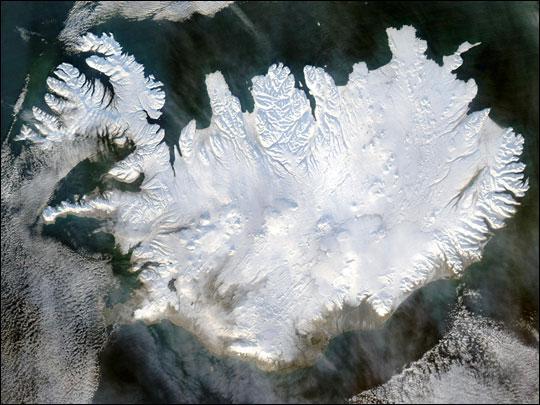
Iceland Volcano Cleared in Case in Extreme Winter of 1783-84

The eruption of a volcano in Iceland is often blamed for the unusually harsh winter of 1783 to 1784 around the North Atlantic. But new research lays the blame for the extreme cold elsewhere.
Scientists find that the extremes of cold back then might actually have been triggered by the same climate effects potentially responsible for the unusually cold and snowy winter that Europe and North America experienced from 2009 to 2010.
These new findings shed light on how extremes in natural variability in climate have played and still play a key role in our world today, along with any recent global warming effects, the researchers said.
Laki erupts
Iceland's Laki volcano began erupting on June 8, 1783, and continued doing so for months, causing a major environmental disaster. The volcano spewed out toxic fumes that spread over northern latitudes, causing about 23,000 deaths in Britain alone.
The summer of 1783 saw heat waves, extreme cold, widespread famines, crop failures and livestock losses a crisis that might have even hastened the French Revolution. The following winter, record cold was seen around the North Atlantic. Temperatures in Europe were about 3.6 degrees Fahrenheit (2 degrees Celsius) below average for the late 1700s, and the winter was also one of the coldest of the past 500 years in eastern North America.
The Laki eruption has been blamed for that exceptionally deadly winter. But the new findings now may exonerate the volcano. Instead of its ashes and gas triggering a colder winter, scientists suggest that the cold snap might have been caused by an unusual combination of climate effects that apparently are similar to those that made the 2009 to 2010 winter so bitter in western Europe and eastern North America.
Get the world’s most fascinating discoveries delivered straight to your inbox.
Then and now
In the winter of 2009 to 2010, the North Atlantic Oscillation (NAO), a climate phenomenon in the North Atlantic sector, went through a negative phase, meaning less warm air flowed into Europe and more cold Arctic air headed toward North America. At the same time, the El NiñoSouthern Oscillation (ENSO), a climate pattern in the tropical Pacific Ocean, went through a warm phase, which can potentially cause wetter, cloudier winters in northern Europe and enhanced storms to hit the central and southern latitudes of the United States.
After analyzing 600 years' worth of data in tree rings, which preserve details about the climate in which the trees grew, the scientists found that NAO and ENSO conditions during the 1783 to 1784 winter were similar to those seen in the 2009 to 2010 winter. In ranking this kind of combined NAO-ENSO events, the researchers found that the 2009 to 2010 winter showed the strongest combined effects and the 1783 to 1784 winter the second strongest in the past 600 years.
At the same time, their simulations of the effects of the Laki eruption and its dissipation through the autumn of 1783 suggest that it did not play a key role in these events.
"What is most interesting to me is the ability to place recent climatic extremes for example, the winter of 2009 to 2010 into a long-term context using tree ring and other paleo-records," Rosanne D'Arrigo, a dendrochronologist at the Lamont-Doherty Earth Observatory of Columbia University, told OurAmazingPlanet. "Our results indicate that natural variability and extremes still play an important role in our climate today, along with global warming effects."
The researchers now plan to examine the 2010 to 2011 winter and place it into long-term context, as well as the different phases of ENSO and NAO, their combinations over time and their spatial variations.
The scientists detailed their findings online March 15 in the journal Geophysical Research Letters.

